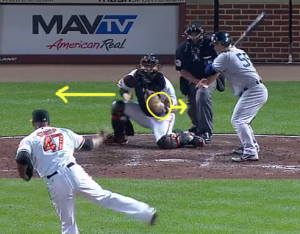
As many of you already know, baseball is a game intricately laced with nuances and complexities that go way beyond the fundamental skills of throwing, hitting, and fielding. One of these layers of complexity involves the influence of the ballpark itself on game outcomes. In Major League Baseball (MLB), the term “park factors” refers to the extent to which a specific ballpark influences scoring and other aspects of the game. A proper understanding of park factors can lead to a significant increase in consistently winning MLB prop bets.
What Are Park Factors?
Every baseball stadium has a distinct design and geographic location, factors that can greatly influence gameplay. Park factors are a set of statistics that attempt to quantify this influence. They measure how friendly a park is to hitters or pitchers, relative to other parks in the league.
For example, a park that has short outfield dimensions like Yankee Statdium tends to have home runs, making it a “hitter’s park”. Conversely, a stadium with large foul territory (Oakland or San Diego) could result in more outs and thus be considered a “pitcher’s park”. Other environmental factors such as altitude, climate, and wind patterns can also play a role in these measurements.
Park factors can be calculated for various metrics including home runs, doubles, triples, and total runs scored. A park factor of 1.00 is league average, with a score over 1.00 indicating a ballpark that favors hitters and a score under 1.00 suggesting it favors pitchers.
Importance of Park Factors

Park factors can have a significant impact on player performance and strategic decision-making in baseball. For both hitters and pitchers, park factors can drastically affect their statistics. For example, a player hitting 30 home runs in a hitter-friendly park may not be as impressive as another player hitting the same number in a pitcher-friendly park. DJ LeMahieu won a batting title in Colorado and has had a substantial drop off in batting average since being traded to the Yankees. To consistently win MLB prop bets, you absolutely must be aware of the temperature, wind speed, and dimensions of the ballpark. At AI Betting Edge we’ve developed proprietary metrics to quantify the impact of a ballpark on any given day.
Furthermore, some pitchers and hitters have a direct correlation between their performance and park factors. Kevin Gausman is a great example of this. This season, his lowest strikeout performances all happened during cold weather games.
Notable MLB Park Factors
Coors Field, home of the Colorado Rockies, is one of the most frequently cited examples of a hitter-friendly park. The ballpark’s high elevation reduces air resistance on batted balls, leading to more home runs and extra-base hits. Consequently, its park factors are typically higher than the league average.
On the opposite end of the spectrum, Petco Park, where the San Diego Padres play, tends to favor pitchers. Its expansive outfield dimensions and coastal climate often result in fewer home runs and lower overall scoring.
Adjusting for Park Factors
To account for the variability introduced by park factors, several advanced baseball metrics adjust player statistics based on the park factors of the stadiums where they play. Metrics such as Weighted Runs Created Plus (wRC+) and ERA- adjust offensive and pitching performance, respectively, to help provide a fair comparison between players who play their home games in vastly different environments.
In conclusion, MLB park factors offer a fascinating glimpse into the subtle influences that can sway the outcomes of games and seasons. They serve as a reminder that baseball is a game deeply connected to its surroundings, with every ballpark offering a unique blend of elements that can shape the narrative of the sport in remarkable ways. Whether you’re a casual bettor or a data scientist looking to add features to your model, an understanding of park factors can help you improve your win rate on MLB prop bets.



